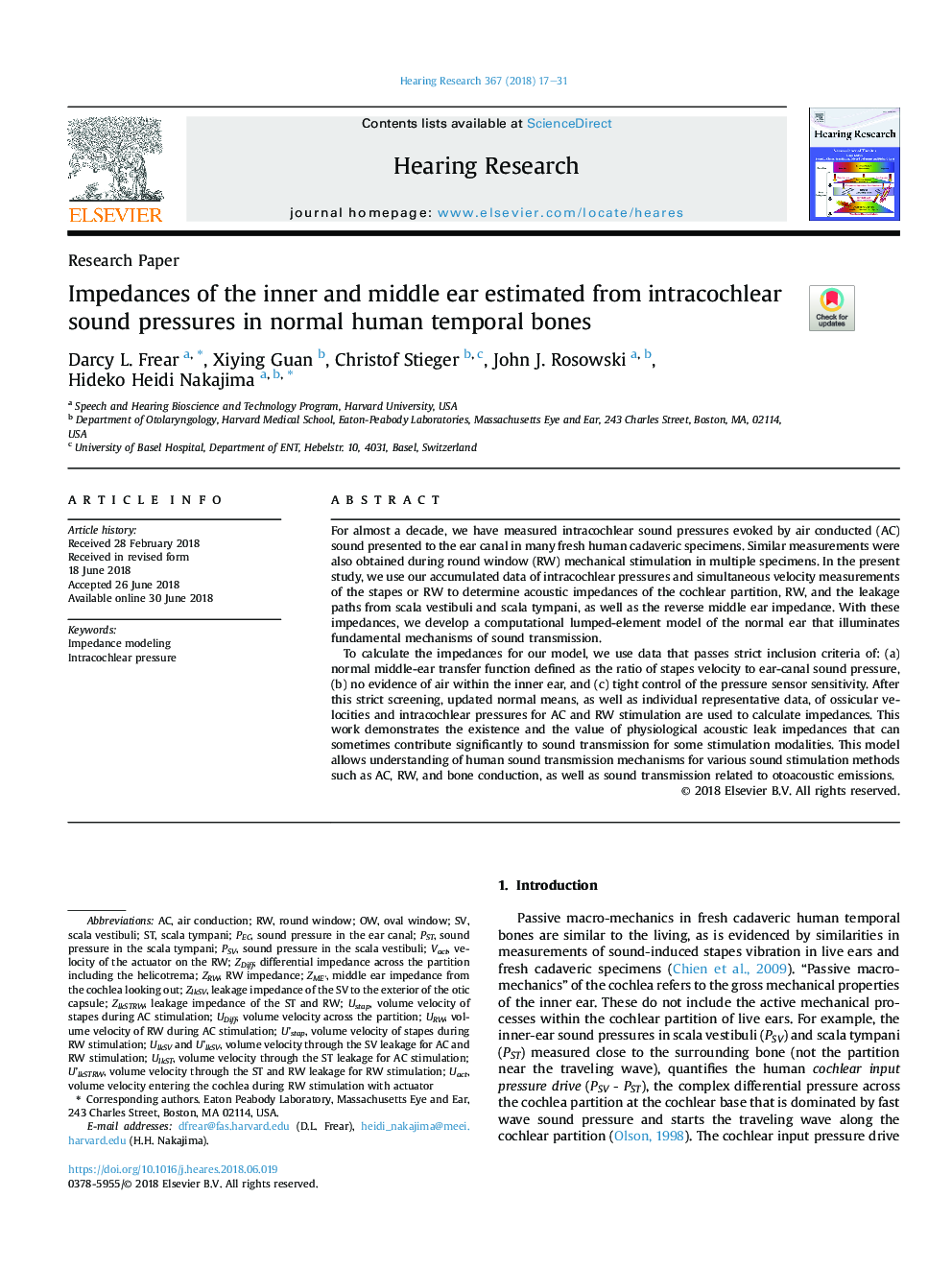| Article ID | Journal | Published Year | Pages | File Type |
|---|---|---|---|---|
| 8842312 | Hearing Research | 2018 | 15 Pages |
Abstract
To calculate the impedances for our model, we use data that passes strict inclusion criteria of: (a) normal middle-ear transfer function defined as the ratio of stapes velocity to ear-canal sound pressure, (b) no evidence of air within the inner ear, and (c) tight control of the pressure sensor sensitivity. After this strict screening, updated normal means, as well as individual representative data, of ossicular velocities and intracochlear pressures for AC and RW stimulation are used to calculate impedances. This work demonstrates the existence and the value of physiological acoustic leak impedances that can sometimes contribute significantly to sound transmission for some stimulation modalities. This model allows understanding of human sound transmission mechanisms for various sound stimulation methods such as AC, RW, and bone conduction, as well as sound transmission related to otoacoustic emissions.
Keywords
Related Topics
Life Sciences
Neuroscience
Sensory Systems
Authors
Darcy L. Frear, Xiying Guan, Christof Stieger, John J. Rosowski, Hideko Heidi Nakajima,
